Click on any photo for a larger version.
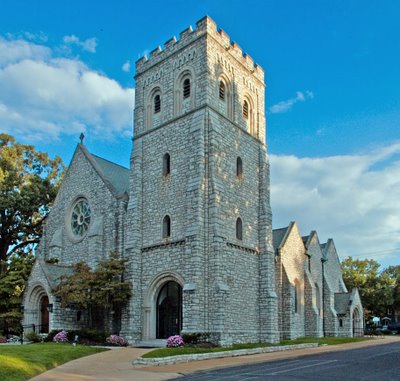
This Romanesque Revival church in the Norman-Gothic style, is a hybrid with both round and pointed arches. The firm of Study, Farrar, and McMahon were the architects.
Archbishop John J. Glennon dedicated the church on October 26th, 1919.

The rectory. The blue-and-white building in the background left is the parish school, constructed in 1963.
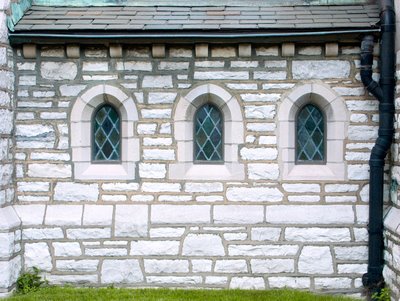
Simultaneously functional and decorative stonework of the church. Most of the stones appear to be cut from the native limestone of the area, while the stones around the windows appear to be made out of finer material.
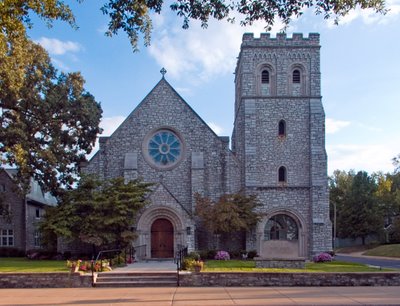
The parish will be soon celebrating its 90th anniversary. Generations of families, often fiercely loyal, have called this parish home.
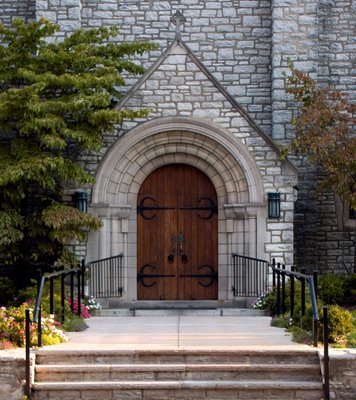
The church sits on fashionable Forsyth Boulevard, one of the major roads leading into downtown Clayton, Missouri, the seat of government for Saint Louis County. Once lined with homes dating from the first half of the 20th century, new condominiums are marching down Forsyth from Clayton, replacing the older structures. From the other end of Forsyth, the University is buying up property at a quick rate, removing these properties from the real estate tax rolls, pushing up sharply the taxes of this church's neighbors.

The nave of the church. Much thanks to Msgr. for offering to let me photograph his church.
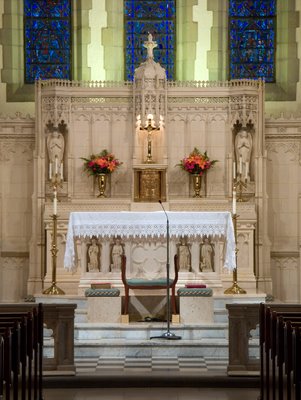
The altar.
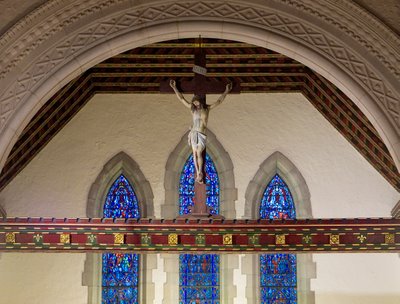
At the top of the chancel, or sanctuary, is the rood beam holding up the rood, or crucifix.
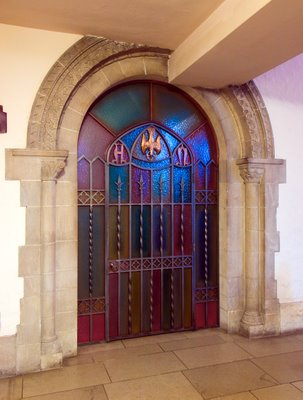
This is now a confessional, but I guess that once it was used as the baptistery. Confessions are heard here from 4 to 4:50 p.m. on Saturdays, and more often during the penitential seasons.
The choir loft rudely truncates the door jamb, but the loft certainly looks original to the church.
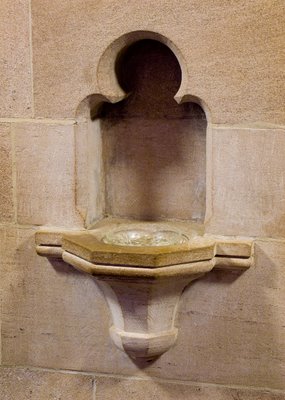
One of the holy water fonts near the front door. The use of holy water goes back to antiquity, to at least the Jewish Temple in Jerusalem.
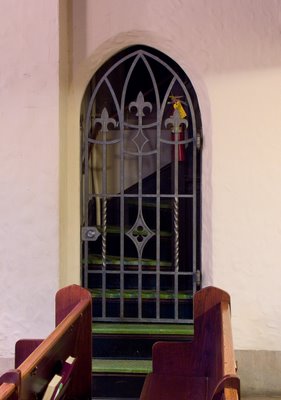
Gated stairway leading up to the choir loft.
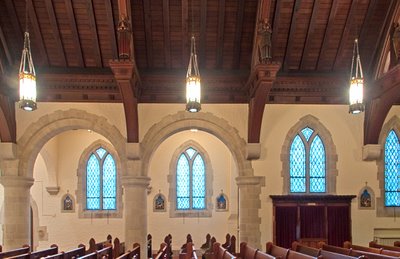
Right hand side of nave.
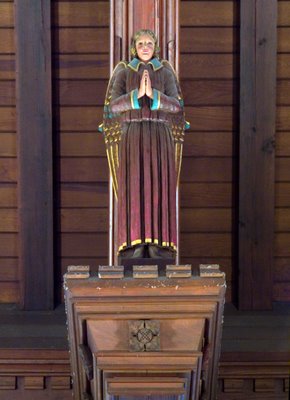
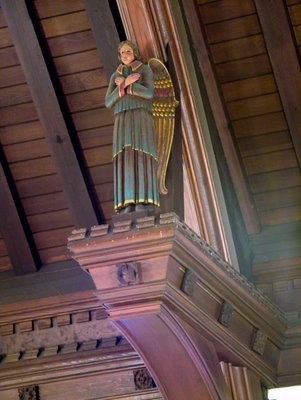
Angels peer down from above.
The book of Revelation, filled with angels, is the model and inspiration for ancient churches.
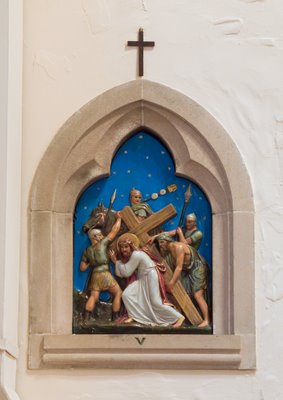
Simon Helps Jesus to Carry the Cross.
Consider how the soldiers, seeing that at each step Jesus, from weakness, was on the point of expiring, and fearing that He would die on the way, when they wished Him to die the ignominious death of the Cross, constrained Simon of Cyrene to carry the Cross behind our Lord.
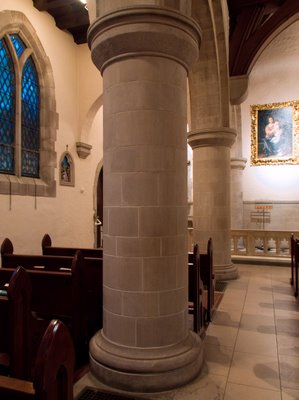
A sturdy column. Notice how the column's stones are finely cut. The stones of each of the rows are uniquely cut, due to the subtle change in column diameter with height.
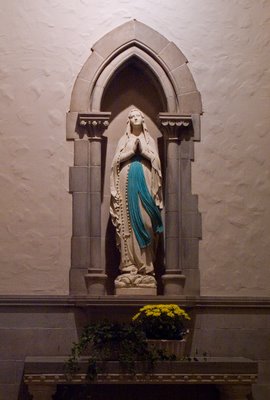
Statue of the Blessed Virgin Mary to the left of the altar.
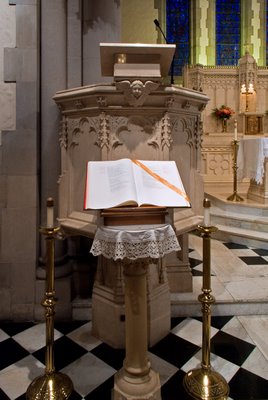
The lectionary, open to the day's readings, sits in front of the pulpit.
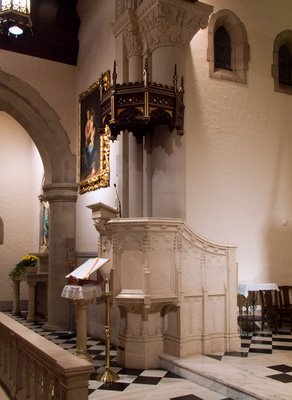
View of pulpit from side.
Note the sounding board above the pulpit, which, in the days before audio amplification, and during power outages, helps reflect and resonate the cleric's voice. Traditionally, pulpits are placed to the side so as to avoid blocking the view to the high altar; this also helps to avoid bad acoustics that may occur in the transept of a cruciform church. Often, the pulpit's position was fine-tuned for best sound after the church was completed.
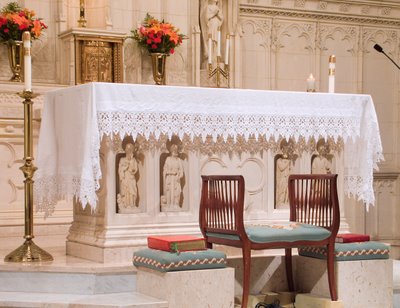
Note the use of hierarchy: the presider's chair sits below and in front of the altar, which is below and in front of the tabernacle.

The tabernacle. Its bronze doors show angels holding the Body and Blood of Christ.
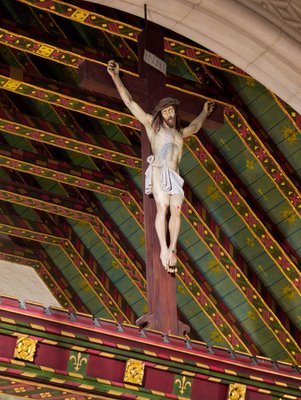
A closer look at the rood, with the chancel vault beyond, richly decorated and colorful.
Gothic Romance is inspired by the "bare ruin'd choirs" of ancient, decayed remains of Gothic churches destroyed by the English King Henry VIII in his rage against the Catholic Church. Gothic fiction is emotional and terrifying, and from this we get the current Gothic subculture—Goths—who are known for their brooding darkness.
However, the original Gothic architecture was bright, beautiful, delightful, and exuberent.
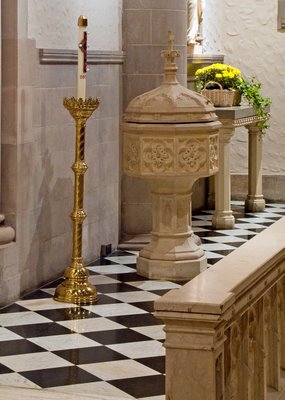
The baptismal font, located behind the communion rail.
The fonts used for baptism and holy water, as well as fountains, all get their name from the Latin fons, meaning natural spring of water. The sign value of this is striking: water washes clean, relieves thirst, and gives life to barren ground. A spring is often the only water found in a desert. Baptism, which acts as it signifies, washes away sin, and like water, drowns the "old self"
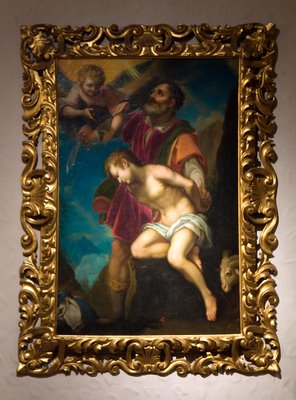
Above the baptismal font is a painting of an angel staying the hand of Abraham, preventing him from sacrificing his son Isaac. For the first time in history, we have a religion that is completely moral, prohibiting human sacrifice.
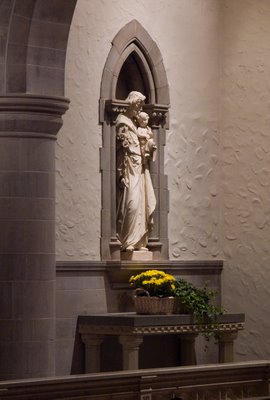
Saint Joseph and the Christ Child, to the right of the altar.
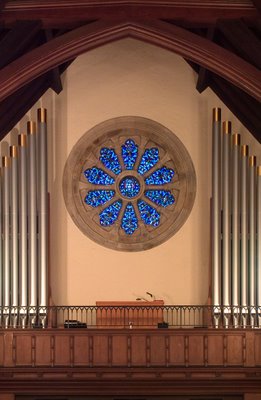
Rose window and organ pipes in the choir loft. In the center of the window is Mary "Regina Cœli".

The garden at dusk.
Church web site:
http://www.ucitylourdes.orgAddress:


Quite beautiful. Thank you.
ReplyDeleteIt's amazing that this church is only 90 years old. It seems so timeless. Thank you for these photos.
ReplyDeleteThe trouble with "up to date" architecture is that it soon will be "out of date".
ReplyDelete